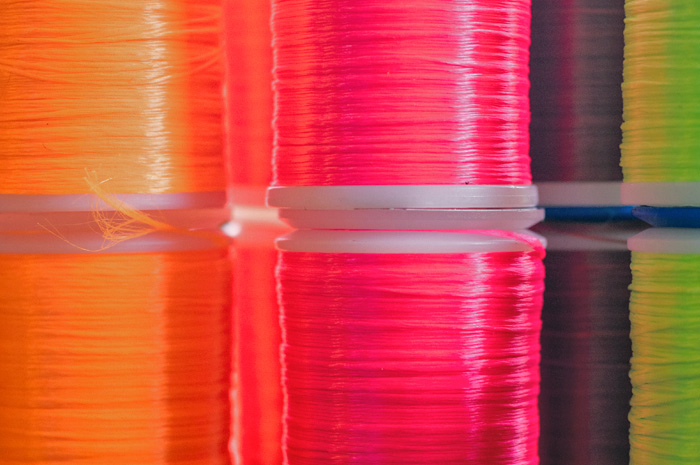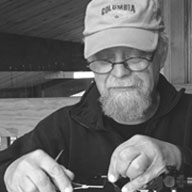Thread Knowledge
Bob Newman - 08/16/17

Hi, my name is Bob. I’m a fly tyer. I can stop if I have to. But I don’t want to.
Many of you have never met me but you may have seen me in the shop. If you have had a custom fly pattern tied by the shop, it’s highly likely that I tied it. I’ve spent so much time around fly tying materials, I can usually figure out the materials the pattern uses quickly and how it is tied.
I started tying flies over 50 years ago, my dad was happy since it was going to be “cheaper” to fish. Back then the local tackle shop had very limited materials available so mail order with Herter’s was the source of many materials. Tying lessons came from the two books on fly tying at the local library. Except for hooks, wire and tinsel, flies back then were tied with natural material.
In spite of what is referred to as the Victorian Era of fly tying in Great Britain with the Classic Atlantic Salmon flies, development of traditional dry flies and soft hackles and the beginnings of the understanding of aquatic entomology, today could be called the glory days of fly tying. We have genetic hackle that is far superior to anything in the past, a vast variety of material, both natural and synthetic, and a variety of hook shapes that complement the types of flies we tie today.
One of the things that have come along in the last ten to fifteen years are many different brands and types of tying thread. Back when I started tying, Danville was the major thread producer. Other tying threads available were Pearsall’s silk threads from England and Nymo, which some really old time tyer’s prefer if they could find it.
Now there are enough different brands of tying thread that many beginning and current tyer’s can get very confused. Threads come in flat, semi-twist, and twisted, from 210 denier to 50, nylon, polyester and gel spun polymer. Denier is defined as the weight in grams of 9,000 meters of the thread. Adding to the confusion, are the “old-time” aught scale that manufacturers have used and still use. These are the most confusing to fly tyer’s since one manufacturers 8/0 thread may be another’s 12/0. The only real way to compare the thread is the denier rating. Some threads are labeled with the denier and some not.
When I’m asked what thread to use I try to find out what flies the tyer will be tying since you would not use a 50 denier (approximately 14/0) thread for muskie flies just like you would not use 210 denier thread for size 24 dry flies. Same thing with tying say a steelhead nymph or stonefly nymph. Why use something that is 60 denier when there is no concern about bulking up the body, a 210 denier thread would be more appropriate.
Another thing to consider when choosing a tying thread, should you use really fine thread and ten or twelve turns of thread to tie in a material or say a 70 denier (6/0) and three turns of thread? In most cases, if you are tying say a nymph, and tying in a rib, shellback, and maybe a dubbing brush, why put ten turns of thread on each material as you tie them in. Just use two or three turns for each material since all of the turns you put there will build up and create bulk where you want it the least. What it really comes to is choose a thread that you like.
There are several charts that compare thread size, construction, diameter, and breaking strength. If you are interested, here is one link to check out:
http://globalflyfisher.com/tie-better/fly-tying-thread-table
Since you are probably wondering, I use Uni-thread 6/0 for most of my tying with 8/0 when I get down to size 18 and Danville 210 for the big fly work.
- Bob Newman

